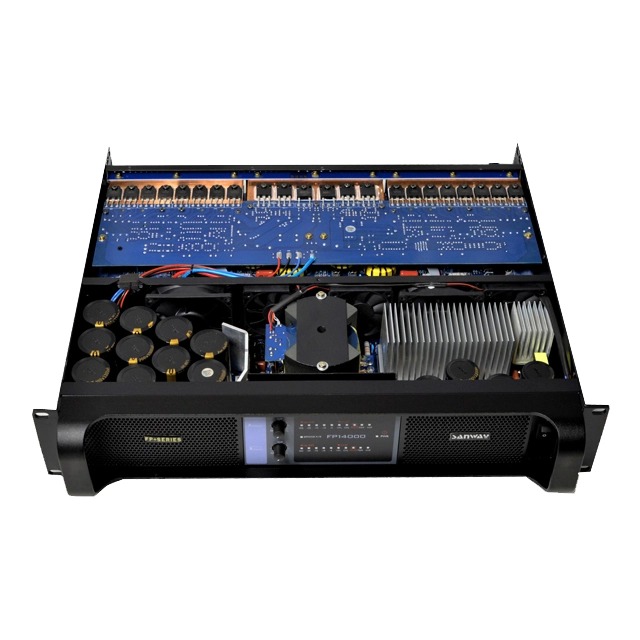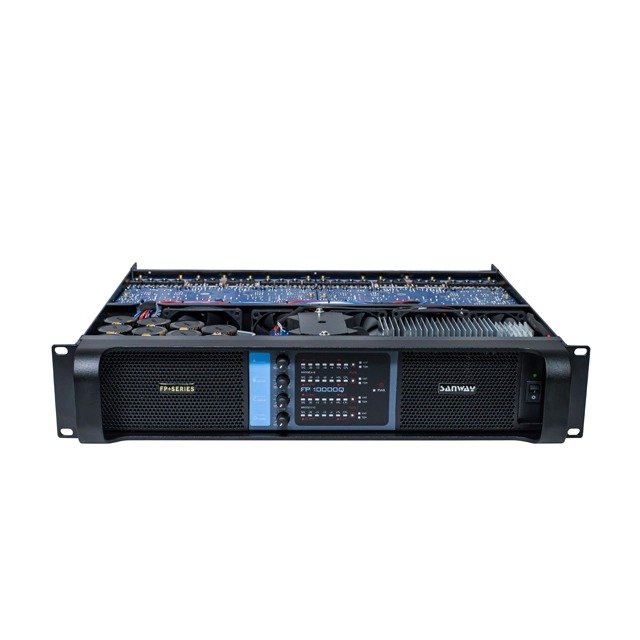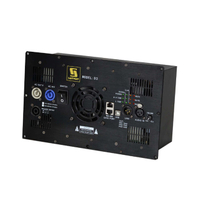
In the world of audio systems, especially when it comes to subwoofers, amplifier selection can make or break the listening experience. One of the most pressing questions among audiophiles and car audio enthusiasts is: Are digital amplifiers better for subwoofers? This article dives deep into the mechanics, benefits, trade-offs, and performance characteristics of digital power amplifiers, with a special focus on their effectiveness in driving subwoofers.
What Is a Digital Power Amplifier?
A digital power amplifier, often referred to as a Class D amplifier, is a type of amplifier that uses pulse-width modulation (PWM) or other digital signal processing methods to amplify audio signals. Unlike analog amplifiers that operate in continuous mode (Class A, AB), digital amplifiers switch on and off rapidly, resulting in less heat and higher efficiency.
The key characteristic of a digital amplifier lies in how it processes input signals. Instead of amplifying the waveform in its original analog form, it converts the signal into a high-frequency digital pulse, amplifies it, and then uses a low-pass filter to restore the signal to a usable analog form for the speakers.
This approach leads to a number of advantages:
Energy Efficiency: Digital amplifiers can reach over 90% efficiency, making them ideal for compact, heat-sensitive installations.
Lightweight and Compact Design: Fewer cooling components mean more portability.
High Output for Lower Power Consumption: Ideal for high-powered subwoofer setups without draining your power supply.
For those new to sound system design, these benefits might sound universally superior. But do they translate to better performance for subwoofers, which demand robust low-frequency power? Let’s explore.

Understanding Subwoofer Amplification Needs
Subwoofers are specialized speakers engineered to reproduce low-frequency sounds—typically from 20 Hz to 200 Hz. These frequencies are physically demanding for speakers to produce, often requiring significant power to move large cones and generate deep bass.
This need for power introduces some unique amplifier requirements:
High Current Output: Subwoofers thrive on amplifiers that can deliver a strong, steady current without clipping or distortion.
Low Frequency Fidelity: Clean signal reproduction at low frequencies is critical.
Thermal Stability: Driving bass at high volumes for extended periods produces heat; the amplifier must handle this reliably.
Given these needs, the question becomes: can digital power amplifiers, known for efficiency and compactness, match the performance of traditional analog models in delivering the robust power subwoofers demand?
Digital Power Amplifier vs Analog Amplifier for Subwoofers
| Feature | Digital Power Amplifier | Analog Amplifier |
| Efficiency | 85%–95% | 50%–70% |
| Heat Generation | Low | High |
| Size & Weight | Compact & Lightweight | Bulky |
| Bass Reproduction Accuracy | Slightly Lower at Peak Loads | Higher Fidelity |
| Ideal Use Case | Space-constrained, energy-efficient systems | High-end, ultra-accurate bass setups |
While digital amplifiers offer remarkable efficiency, they often employ switching technologies that—while improving output per watt—may introduce minor artifacts at ultra-low frequencies. These distortions are usually inaudible to the human ear but may be noticed in professional studio environments.
On the other hand, analog amplifiers, especially Class AB types, offer superior linearity and low-end accuracy, but at the cost of size, weight, and heat. That makes them less favorable for car subwoofers or mobile setups where space and cooling are limited.
Pros and Cons of Using a Digital Amplifier for Subwoofers
Pros
High Efficiency: Digital amplifiers produce more output with less heat, crucial for subwoofers that are used continuously at high volumes.
Compact Form Factor: Easy to install in car trunks, tight cabinets, or minimalist home theaters.
Cost-Effective: Often less expensive than high-powered analog amplifiers due to fewer cooling and heat-management requirements.
Better for Battery-Dependent Systems: Car audio systems benefit from lower current draw.
Cons
Signal Processing Artifacts: May suffer from switching noise or low-end compression at peak loads if not well-engineered.
Potential Latency: Although negligible, some digital amplifiers introduce delay, which can slightly desynchronize sound in multi-driver systems.
Less Ideal for Purist Audiophiles: Those seeking the absolute clearest bass reproduction may prefer analog amplification.
Despite these limitations, modern digital amplifier designs have significantly closed the performance gap, making them highly capable for almost all subwoofer applications outside of audiophile mastering environments.
Key Considerations When Choosing a Digital Amplifier for Your Subwoofer
Not all digital power amplifiers are created equal. When choosing one for your subwoofer, keep the following in mind:
Power Matching
Ensure the amplifier’s RMS power rating matches or slightly exceeds the subwoofer’s RMS handling capacity. Underrating the amplifier can lead to distortion, while overrating may risk blowing the speaker.
Impedance Compatibility
Check whether the amplifier supports the subwoofer’s impedance (typically 2 ohm, 4 ohm, or 8 ohm). Mismatched impedance can reduce performance or damage components.
Built-in Filtering and Crossover Controls
High-quality digital amplifiers include low-pass filters (LPF), subsonic filters, and bass boost features to tailor the subwoofer’s output to your listening environment.
THD and SNR Ratings
Lower Total Harmonic Distortion (THD) and higher Signal-to-Noise Ratio (SNR) values indicate cleaner amplification. Aim for THD < 1% and SNR > 90 dB.
Cooling Mechanism
Even digital amplifiers generate heat under high loads. Look for models with effective heat sinks or fans to ensure stable long-term operation.

Are Digital Amplifiers the Best Choice for Subwoofers?
So, after weighing the performance metrics, benefits, and real-world limitations, are digital power amplifiers better for subwoofers?
The answer is: It depends on your specific needs.
If you're building a compact, high-efficiency system—like a car audio setup or a small home theater—digital amplifiers are an excellent choice. Their power-to-size ratio, minimal heat output, and affordability make them ideal for modern installations.
However, if your focus is audiophile-grade bass precision, such as in a professional studio or ultra-high-end sound system, a high-quality analog amplifier may still have the edge in delivering that last 5–10% of low-end fidelity.
For 90% of users, though, today’s digital amplifiers provide more than enough performance—often outperforming analog options in real-world usability, efficiency, and reliability.
FAQ: Digital Amplifiers and Subwoofers
Q1: Will a digital amplifier distort my subwoofer’s bass?
Not if you choose a high-quality model with proper filtering and adequate power output. Lower-end models may introduce noise or artifacts, but most users won’t perceive these under normal conditions.
Q2: Do digital amps need a cooling fan?
Most high-efficiency digital amps don’t require active cooling. However, amps used in hot environments or at high volumes continuously may benefit from built-in fans or external cooling.
Q3: Can I bridge a digital power amplifier?
Some digital amps support bridging to increase power output. Always consult the amplifier’s documentation before attempting this to avoid damaging your equipment.
Q4: Are digital amps harder to install?
No. In fact, digital amps are often easier to install due to their smaller size and lighter weight.
Conclusion
To summarize, digital power amplifiers offer an outstanding blend of efficiency, power, and versatility that suits the needs of most subwoofer setups—especially where space, energy, or cost is a concern. With modern digital designs nearly eliminating previous fidelity concerns, they are not just a viable option—they are often the best option for the everyday listener.
So unless you’re crafting a system for golden-ear critical listening, a digital amplifier is not just good for subwoofers—it’s one of the smartest choices you can make.

 English
English













